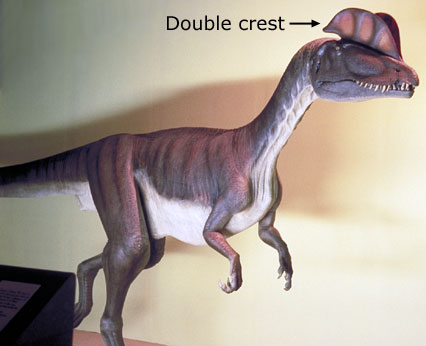Dilophosaurus Details
 |
 |
"The specimen was brought to Berkeley and cleaned up by a
WPA project under Dr. Wann Langston. It took three men two years to clean
and prepare the skeleton and then make a wall mount of the animal. We knew
it was new, and in 1954 I published a preliminary description naming it
Megalosaurus wetherilli thinking it might just as well belong there
as anywhere else. We didn't know how new it was." |
 |
"In 1964 I became concerned over the age of the animal. It
was based on differences of opinion as to whether the rock were of Triassic
or Jurassic age (as I had said)." |
 |
"So I returned and yes, the rocks were of Kayenta formation.
About a quarter mile south of the original find I found a fourth skeleton
which turned out to be a very fine skeleton of an adult animal." |
 |
"It was this skeleton, that on preparation in our laboratory
showed very clearly that the animal had a double crest and that the name
should be changed from Megalosaurus. We proposed the new name of Dilophosaurus,
based on the double crest on top of the head. The original skull also shows
the crest, but we had not recognized it. The two crests had been crushed
together, and we had assumed they were part of a cheek bone that had been pushed
out of place." |
|
Return To Introduction
Dilophosaurus Closeup

 |
